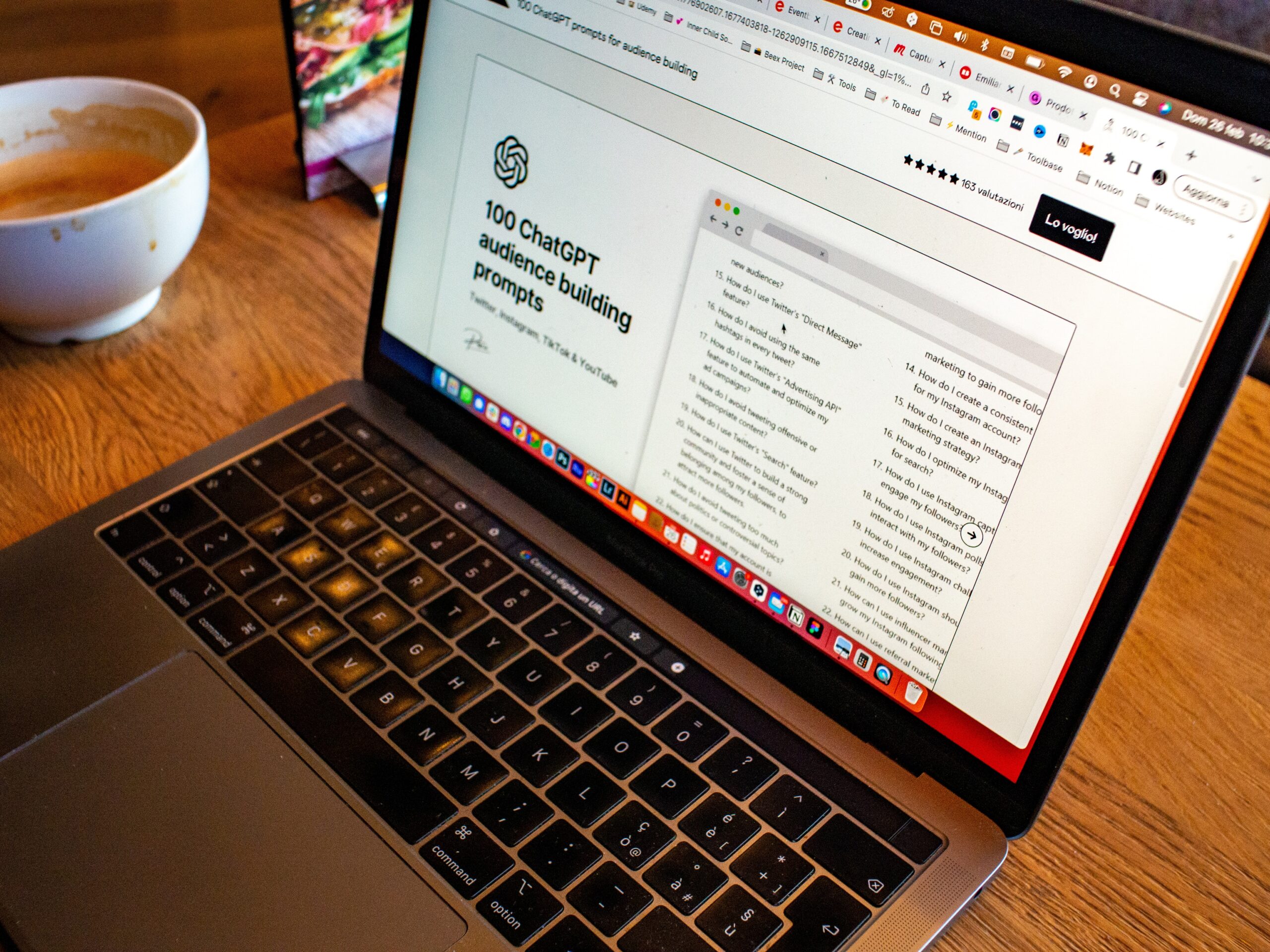In an age of digital marketing ChatGPT has grown into a powerful tool that uses artificial intelligence and machine learning to help businesses automate conversations with their customers. A variant of the GPT (Generative Pre-trained Transformer) model developed by OpenAI, ChatGPT can simulate human-like text responses, making it ideal for creating compelling marketing prompts that drive conversions. The key to harnessing the power of ChatGPT lies in developing strategies that not only attract attention, but also encourage desired actions from potential customers. This article looks at five effective strategies for creating marketing prompts with ChatGPT that are designed to increase engagement and increase conversion rates.
Introduction to ChatGPT
ChatGPT is an advanced form of AI-powered communications technology that enables automated yet natural conversations between businesses and their audiences. The model is trained on large data sets, allowing it to understand context, mimic human conversations and provide relevant answers. This capability makes it invaluable for marketers looking to increase engagement without losing the personal touch that customers value.
ChatGPT's real power lies in its adaptability. Regardless of the industry or nature of the interaction, ChatGPT can be customized to reflect a brand's voice, respond to specific questions, and guide customers through their journey. From providing information and answering frequently asked questions to selling products and services, ChatGPT can be a comprehensive solution for digital customer engagement.
However, to maximize their effectiveness, it is critical to create marketing prompts that are clear, concise, and designed to elicit specific responses. Combining the power of ChatGPT with well-thought-out strategies can result in highly effective marketing that translates into tangible business results, and that's what this article aims to highlight.
Understanding marketing prompts
Marketing prompts are calls to action (CTAs) or messages designed to drive engagement, response, or purchase from the target audience. These clues are the hook that grabs potential customers' attention and encourages them to take the next step in the consumer journey. Effective marketing prompts aren't just about telling customers what to do; they bridge the gap between customer needs and business offerings.
Understanding the psychology behind why people click, buy or subscribe is key to creating effective marketing prompts with ChatGPT. It's about tapping into consumers' underlying motivations, emotions and decision-making processes. When done well, prompts can meet the customer's immediate needs while aligning with the company's long-term goals.
Proper prompts can make the difference between a customer bouncing off a page or taking the action you want. With the integration of AI and conversational marketing, prompts don't have to be static or general. Instead, they can be dynamic, adaptive, and ultra-personalized, which leads us to the first strategy: personalization.
Strategy #1: Personalization
Personalization is not just a buzzword; it is a proven strategy that significantly impacts conversion rates. ChatGPT can be an incredible tool for creating personalized experiences. Through data analysis and understanding customer profiles, ChatGPT can generate cues that resonate on a personal level, helping potential customers feel understood and valued.
Personalized prompts can be created by taking into account browsing history, purchase history, or any other interaction a user has had with your brand. This allows prompts to be more than just general calls to action; they can recommend products, remind users of past interests, or even recognize milestone moments like birthdays or anniversaries with targeted messages.
To leverage personalization effectively with ChatGPT, marketers must feed the AI with the right data. This includes customer demographics, preferences and behaviors. With this information, ChatGPT can tailor conversations that feel one-on-one rather than broadcast, increasing the likelihood of a positive response.
Strategy #2: Clear CTAs
The clarity of your CTAs determines whether your audience takes action or not. ChatGPT can help create CTAs that are simple and compelling, but it's up to the marketer to clearly define the desired action. Whether it's subscribing to a newsletter, downloading a whitepaper or making a purchase, the CTA should be unmistakably clear.
Clarity also means keeping the message simple. Avoid jargon and complex language that can confuse the user. ChatGPT allows you to test different versions of CTAs to find the most effective wording. The key is to keep the focus on the action you want the user to take and design the prompt around that.
Furthermore, visibility plays a crucial role in the effectiveness of CTAs. In the digital world, this translates to the placement, size and color of buttons or links within the chat interface. ChatGPT can be used to experiment with these elements to find the most striking combination.
Strategy #3: Creating urgency
Creating a sense of urgency is a proven marketing strategy that can be improved with ChatGPT. The idea is to make the audience feel like they have to act quickly or they might miss out. ChatGPT can create prompts that convey time sensitivity, such as limited-time offers, countdowns, or low inventory alerts.
The language used is crucial in creating urgency. Phrases like 'Hurry', 'Last chance' or 'While supplies last' can encourage users to take action. However, it is important that the urgency is real; Overuse or false alarms can lead to distrust and damage to brand reputation.
ChatGPT can also personalize the urgency of the user's behavior. For example, if a user is considering a purchase, a ChatGPT-created prompt such as “Just for you: special discount ends in 3 hours” could be the nudge they need to convert.
Strategy #4: Interesting questions
One of the most effective ways to engage an audience is to ask questions. Questions provoke thought, stimulate interaction and can lead users on a conversion path. ChatGPT can be used to create questions that are not only relevant to users, but also structured to lead to the desired action.
Open-ended questions encourage users to express their opinions and needs, which can be used to steer the conversation toward a conversion. For example, if you ask, “What are you looking for in a product?” can open a dialogue that results in a personalized product recommendation.
On the other hand, closed questions can be used to segment users or qualify leads. ChatGPT can help create questions that categorize users based on their answers, allowing for more targeted and effective marketing efforts.
Strategy #5: Consistent testing
The digital marketing landscape is constantly changing, just like user preferences and behavior. What works today may not work tomorrow, which is why consistent testing is crucial. With ChatGPT, marketers can test different prompt variations to see what resonates best with their audience.
A/B testing, which shows different versions of prompts to separate segments of the audience, is a practical way to measure effectiveness. Metrics such as click rates, conversion rates and time spent can provide insight into which prompts are performing and why.
Iterative testing and refinements must be performed on an ongoing basis. ChatGPT enables rapid testing of new approaches, language, and structures, allowing marketers to stay ahead and continually optimize their efforts for maximum conversions.
Conclusion and follow-up for marketing prompts
Developing effective marketing prompts that drive conversions is an art that requires understanding human psychology, combining creativity with strategy and deploying the right tools. ChatGPT, with its advanced AI capabilities, has revolutionized the way businesses interact with customers, providing a personalized and scalable solution for crafting compelling prompts.
By focusing on personalization, clear CTAs, creating urgency, compelling questions, and consistent testing, marketers can take their prompts to the next level and see a significant impact on their conversion rates. As AI continues to evolve, the opportunities for further refinement and effectiveness of marketing prompts with tools like ChatGPT only increase.
The next steps involve integrating the strategies described in this article with your existing marketing efforts. Start personalizing prompts for your audience, sharpen your CTAs for clarity, incorporate urgency authentically, engage your customers with thought-provoking questions, and continually test and adapt your approach. With perseverance and the power of ChatGPT, your marketing prompts can become irresistible invitations that drive conversions and contribute to the growth of your business.
In conclusion, ChatGPT's potential in creating effective marketing prompts is enormous. The strategies discussed – personalization, clear CTAs, creating urgency, compelling questions, and consistent testing – are not just concepts, but actionable steps that can be integrated into marketing initiatives. As businesses look to the future, embracing AI-driven solutions such as ChatGPT are critical to staying competitive, connecting with customers and achieving marketing success. It's an exciting time for digital marketers who are on the cusp of a new era of customer engagement, armed with technology that can transform the way we communicate, understand and ultimately convert our audiences.











